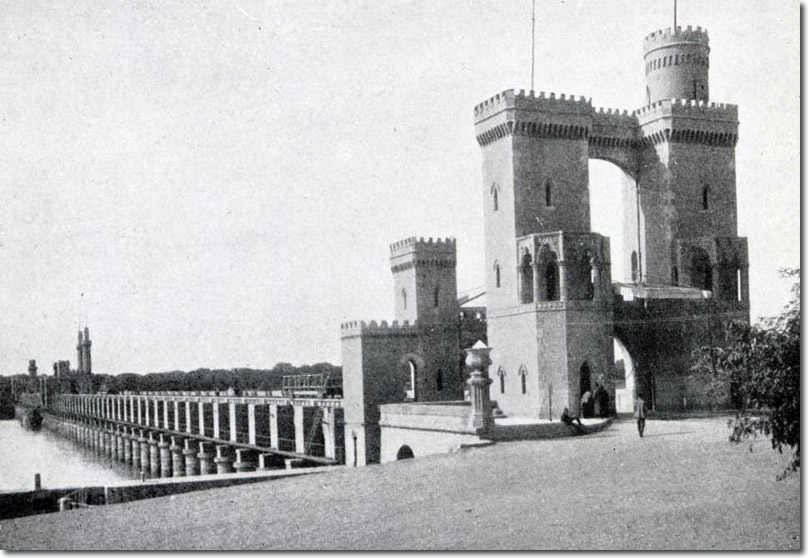|
|


|
|
Colin Scott-Moncrieff's first priority as Director of Irrigation for Egypt was the Nile Barrage which had been designed to retain water to irrigate the Delta and had been built at great expense between 1843 and 1862 but soon abandoned when cracks appeared in its structure. Scott-Moncrieff arranged for a trial closing of the gates allowing a limited operation, while carefully monitoring the cracks. The overall effects were startling. In addition to a great reduction in costs of lifting water to irrigate fields, and labor savings needed to unclog the canals from deposited silt, the cotton crop was doubled, and the costs needed to raise crops in general was cut in half. These combined factors would stimulate demand for agricultural land which saw a doubling in price and an immediate demand which could not be satisfied. The results were so successful in terms of improved agricultural yield that he was able to ask for, and get, a million pounds for a complete repair and strengthening of the Barrage, which was carried out between 1885 and 1890. Over a period of nine years he reorganised the whole irrigation system and "was so successful in improving the whole irrigation system that Egypt, from being a bankrupt country, became comparatively flourishing". For his work in Egypt he was appointed KCMG.
"The barrage is a double bridge, or weir, the eastern part spanning the Damietta branch of the Nile, the western part the Rosetta branch. The appearance of the structure is so light and graceful that the spectator finds it hard to conceive of the difficulty and the greatness of the work itself. Architecturally, the barrage is very beautiful, with a noble front and a grand effect, produced by a line of castellated turrets, which mark the site of the sluice gates. There are two lofty crenellated towers, corresponding with the towers over the gateway of a mediaeval baronial castle. The sluices are formed of double cones of hollow iron, in a semicircular form, worked on a radii of rods fixed to a central axis at each side of the sluice-gate. They are slowly raised or let down by the labour of two men, the gates being inflected as they descend in the direction of the bed of that part of the river whose waters are retained. The working of the barrage was never what it was intended to be. After the year 1867 it ceased to be of any practical utility, and was merely an impediment to navigation. Between the years 1885—90, however, during the British occupation, Sir Colon Scott-Moncrieff successfully completed the barrage at a cost of $2,500,000, and now the desired depth of eight feet of water on the lower part of the Nile can always be maintained. It proved to be of the greatest advantage in saving labour worth hundreds of thousands of dollars a year, and in the irrigation and navigation facilities that had been contemplated as among the benefits which would naturally accrue from its successful completion." Extract from History of Egypt |
Armed Forces | Art and Culture | Articles | Biographies | Colonies | Discussion | Glossary | Home | Library | Links | Map Room | Sources and Media | Science and Technology | Search | Student Zone | Timelines | TV & Film | Wargames